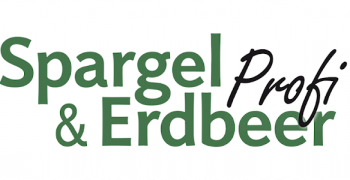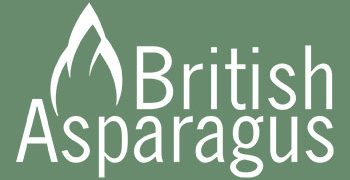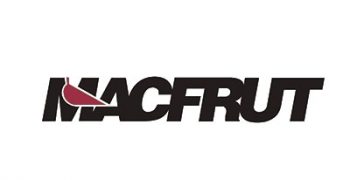Argentina studies suitability of 13 all-male asparagus cultivars
Argentina’s current population of about 46 million people is more than 4 million above what it was in 2012, when the country’s annual asparagus crop surpassed the 10,000 ton mark for the first time, with a total of 10,500 tons. But unlike its population, Argentina’s asparagus production has hovered at much the same level ever since. The result for 2022 was 10,605 tons, ranking Argentina 15th among the world’s biggest asparagus producers. (Faostat) Meanwhile, the country’s levels of fresh asparagus imports have fluctuated, standing at 23.5 tons in 2012 then 39 tons a decade later, with a high point of 81.3 tons in 2018. (ITC Trade Map) And according to a media report in 2021, annual consumption of asparagus in Argentina was about 300 g per capita and trending downwards. As for exports, from 674 tons in 2005 (of which 37% went to Spain, 35% to the US and 9% to Italy), the total dwindled to zero in 2018 (ITC Trade Map), when Argentina nosedived into an economic crisis from which it has never fully recovered.
Could asparagus help Argentina diversify its crops?
Asparagus is currently enjoying a global surge in consumer popularity on the back of its nutritional benefits, gourmet status and versatility as a vegetable. Within Argentina, where it is currently cultivated in eight provinces, and in other Latin American countries, surveys similarly show a marked consumer preference for this species among non-traditional crops. With Argentina seeking to diversify its perennial crop production, which is currently highly focused on extensive crops, there is interest there in considering if asparagus would be a suitable alternative crop. A study is thus underway in the Province of Buenos Aires – where asparagus has been cultivated since 1912 – that seeks to identify which specific asparagus cultivars hold the most promise in terms of commercial productivity. The study is part of the Fourth International Asparagus Cultivar Trial organised by the Asparagus Working Group of the International Society for Horticultural Science (ISHS).
It takes various years to see how cultivars adapt to local conditions
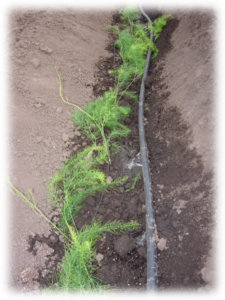
As stated in the article “Productivity of a trial of thirteen asparagus genotypes in their eighth year”, the correct choice of genotypes to cultivate in a certain region is one of the main factors affecting later productivity. Because asparagus is a crop that presents marked genotype-environment interaction, it is necessary to evaluate the behaviour of different hybrids over various years in target production areas in order to determine which ones truly are the best adapted to the local agricultural and climatic conditions, especially when it comes to rainfed plantations. For this reason, the aim of the trial was to evaluate the performance of the 13 genotypes chosen once they had reached their stable productive stage – eighth harvest year.
Cultivars from Italy, China and the US used in trial
The thirteen all male hybrids chosen for the experiment were from three different countries: Italy, China and the United States. The six Italian green genotypes, obtained from the CRA (Center for Agricultural Research) in Lodi, were ‘IÍtalo’, ‘Vittorio’, ‘Eros’, ‘Ercole’, ‘Giove’ and ‘Franco’. From China came ‘Chino’ and from the United States the following six cultivars: ‘Early-California’, ‘UC 157’, ‘Patron’, ‘NJ-1189’, ‘NJ-1123’ (green) and ‘NJ-1192’ (a purple tetraploid). The experiment was initiated on November 16, 2011, close to the city of Azul in the centre of the Province of Buenos Aires, Argentina, in the Experimental Field (36°48’S, 59°51’W) of the Faculty of Agronomy, National University of the Centre of the Province de Buenos Aires (UNCPBA). Seedlings of 120 cm3 were planted in a random complete block design with four repetitions and at a density of 23,810 plants per hectare (1.4 m between rows and 0.3 m between plants within rows). Before planting, the experimental area was prepared with several applications of a disc plough and two of a cross chisel, and days before planting the discs were reapplied, followed by a tiller. The rows were marked with a furrow opener to a depth of 0.25 m.
Combined system used to control weeds
The experiment’s planted area was kept free of weeds via a combined system involving use of a motocultivator, manual removal and chemical control. Prior to plantation, Trifluralina was applied at 2 L/ha and in subsequent years a mixture of 0.5 kg/ha of 35% Metribuzı́n (C8H14N4OS) and 2.5 L/ha of 31.7% Pendimetalı́n (C13H19N3O4) (from the second year), in pre-emergence. In post-emergence, the following were applied as necessary: Glyphosate (C3H8NO5P) and Bentazon (C10H12N2O3S), in the areas affected by Cyperus rotundus; among other species.
The plants were rain-fed alone upon reaching stable production
Where needed, supplementary drip irrigation was applied weekly during the first few years after planting. Once a stable productive stage was reached the plants were solely rain-fed. Fertiliser was applied at the base in bands of 0.3 m with diammonium phosphate ((NH4)2HPO4) at 250 kg ha-1, and broadcast application of urea (CH4N2O) took place once a year during the vegetative phase, with dosage varying according to the point in the crop cycle. On November 28, 2018, the biological fertiliser Arco-Plus, of Mycophos (1 L ha-1) was applied, composed of macronutrients (4.6; 1.2 and 7% NPK, respectively); 14 micronutrients and vegetable hormones.
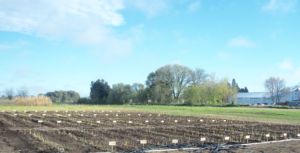
Harvesting took place every other day
From September 18 to November 12, 2019, spears were harvested – cut with knives at soil level – every second day, making for 27 days of harvesting in total. The harvest started when the spears were at least 23 cm long and had compact heads, which is the parameter denoting commercial maturity under the applicable quality protocol* in Argentina. All spears produced were harvested, even if destined as waste, so that the remaining spears could develop. Once harvested, the spears were taken to the Processing Laboratory of Horticulture of the Faculty of Agronomy, UNCPBA, for washing and post-harvest processes including grading. This transport took place as soon as possible after harvesting in order to preserve the organoleptic properties of the spears.
‘NJ-11232’ stood out as the strongest performer in commercial spear numbers
The researchers said that in the stable productivity stage of the trial (eighth harvest year), five male green asparagus genotypes of Italian origin (‘Franco’, ‘Giove’, ‘IÍtalo’, ‘Eros’ and ‘Vittorio’) and two genotypes of North American origin (‘NJ-1123’ (green) and ‘NJ-1192’ (purple tetraploid) demonstrated their productive superiority in tons per hectare for the central zone of the Province of Buenos Aires. In terms of the number of spears suitable for marketing, the North American genotype ‘NJ-1123’ delivered the best result. Although it also had the highest proportion of discarded and number two grade spears, it maintained its status as one of the best performers for commercial spear numbers, they said. (‘NJ-1123’ actually stood out for its productivity in each size not just in the eighth year of the trial but from the start of the plantation’s productive life.) Next after ‘NJ-1123’ in terms of total number of spears in the eighth year came ‘Giove’, ‘Ercole’, ‘Eros’ and ‘Early California’. For the largest spear diameters, ‘Eros’ and ‘Giove’ were the most productive genotypes, while for the smallest spear diameters it was ‘Early-California’ and ‘UC-157’.
Many more spears in 8th year vs. early productive years
In their conclusions in the paper, the researchers said that, as would be expected, the plantation productively evolved over the years and produced many more spears in the eighth year compared to the early productive years. They remarked that the percentage of discarded spears was high, “indicating that efforts to improve management practices during harvest should result in increases in commercial productivity.” (Earlier in the paper, they said the high discard rate was possibly due to the frequency of harvest being every other day, rather than every day.) Observing that there were notable differences in the ranking of the genotypes for productivity and spear number between the eighth productive year (reported in the paper) and earlier years of the plantation, they said, “It would seem that some genotypes require several years of growth before their adaptation to a certain geographic zone becomes apparent.”
Main source:
Castagnino, A.M., Diaz, K.E., Rosini, M.B., Benson, S., Bastien, E., García-Franco, A. and Rogers, W.J. (2023). Productivity of a trial of thirteen asparagus genotypes in their eighth year within the IV International Asparagus Cultivar Trial (ISHS). Acta Hortic. 1376, 81-88
DOI: 10.17660/ActaHortic.2023.1376.13
Traits evaluated included commercial fresh productivity
In order to establish the cultivars with the best commercial productivity, they were evaluated according to the following variables:
– Total fresh productivity (TFP) (1st and 2nd quality, plus discarded spears), in tons per hectare;
– Commercial fresh productivity (CFP) (1st quality spears) through two cutting lengths of short, 17 cm (CFP-S) and long, 22 cm (CFP-L);
– Total number of spears (TNS), commercial and discarded;
– Number of commercial spears (NCS) and its short and long components, NCS-S and NCS-L, respectively;
– Proportion of discarded spears and types of defects: bolted spears, freeze-damaged spears, plague-damaged spears, overly short spears, and other defects, such as diseased, twisted or double spears;
– Spear diameter distribution, according to the spear diameter 2 cm from the base: Asparagina (Asp): <6 mm; Small (S): 6-9 mm; Medium (M): 9-12 mm; Large (L): 12-16 mm; Extra Large (XL): 16-18 mm; Jumbo (J): >18 mm, as indicated by the aforementioned Argentine quality protocol.
The statistical evaluation was carried out by analysis of variance (ANOVA) and least significant difference (LSD), with a significance level of P≥0.05.


















